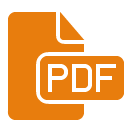Question
Recommendations
![]()
After analysing the evidence available on survivors of stroke on antithrombotic treatment for secondary prevention with haemorrhage, we recommend conducting research. The identification of this area of uncertainty reveals a clear need for patients, health professionals and health systems.
Rationale
No studies assessing the research question have been found, mainly due to the exclusion of the target population from clinical trials. In general, randomised trials reported have excluded patients with a history of haemorrhage, and therefore, it is not possible to assess the risk/benefit balance of antiplatelet and anticoagulant therapy for the secondary prevention of stroke, despite the interest in having and need for standardised treatment regimens for this type of patient75.
Three relevant publications were found that identified the clinical uncertainty associated with patients under antithrombotic treatment (antiplatelets or anticoagulants) who developed haemorrhage, although none of them met the inclusion and exclusion criteria set74,75,77. The 2019 RESTART study included patients on therapy for the prevention of occlusive vascular disease in whom this therapy was withdrawn after they experienced intracerebral haemorrhage. That study excluded patients with a history of ischaemic stroke (haemorrhagic transformation of stroke), and therefore, did not include the target population of this guideline.
Secondly, in the case of the 2017 systematic review by Perry et al., the analysis included patients with intracerebral haemorrhage on heparin, and hence, their data could not be used to provide an answer to the question posed75.
Thirdly, the 2017 systematic review and meta-analysis of retrospective studies by Murthy et al. included patients with a previous stroke and other disorders but disaggregated data were not reported. Although these authors carried out sensitivity analyses for various factors, they did not include the population with a history of stroke in the analyses, and hence, it was not possible to extract data to provide an answer to the question posed.
Regarding the clinical practice guidelines identified, we should highlight those of the European Society of Cardiology (ESC) recently published in collaboration with the European Heart Rhythm Association (EHRA). These guidelines state that the recommendation in patients with atrial fibrillation with a high risk of ischaemic stroke to (re) start treatment with DOACs rather than use vitamin K antagonists (in patients who meet the criteria for this medication) should be considered in consultation with the neurologist (stroke expert) after the onset of intracranial haemorrhage whether related to trauma or with a spontaneous acute onset (including subdural, subarachnoid, and intracerebral haemorrhage) for careful consideration of the risks and benefits78.
The existence of recent guidelines addressing this topic and lack of scientific evidence make it clear that this issue is relevant and there is a major need for and interest in making practice guidelines available.
Complete clinical question
For full information on this question (available in Spanish), see:
References
74. RESTART Collaboration. Effects of antiplatelet therapy after stroke due to intracerebral haemorrhage (RESTART): a randomised, open-label trial. Lancet [Online]. 2019 [accessed June 2021];393(10191):2613-23. URL: https://doi.org/10.1016/s0140-6736(19)30840-2
75. Perry LA, Berge E, Bowditch J, Forfang E, Rønning OM, Hankey GJ, et al. Antithrombotic treatment after stroke due to intracerebral haemorrhage. Cochrane Database Syst Rev [Online]. 2017 [accessed June 2021];5:CD012144. URL: cochranelibrary.com/es/cdsr/doi/10.1002/14651858.CD012144.pub2/epdf/full76.
76. Hemphill JC, Greenberg SM, Anderson CS, Becker K, Bendok BR, Cushman M, et al. Guidelines for the management of spontaneous intracerebral hemorrhage: A guideline for healthcare professionals from the American Heart Association/American Stroke Association. Stroke [Online]. 2015 [accessed June 2021];46(7):2032-60. URL: https://doi.org/10.1161/STR.0000000000000069
77. Murthy SB, Gupta A, Merkler AE, Navi BB, Mandava P, Iadecola C, et al. Restarting anticoagulant therapy after intracranial hemorrhage: A systematic review and metaanalysis. Stroke [Online]. 2017 [accessed June 2021];48:1594-600. URL: https://doi.org/10.1161/STROKEAHA.116.016327
78. Diener H-C, Hankey GJ, Easton JD, Lip GYH, Hart RG, Caso V. Non-vitamin K oral anticoagulants for secondary stroke prevention in patients with atrial fibrillation. Eur Hear J Suppl [Online]. 2020 Sep [accessed May 2021];22(Suppl_I):I13–21. URL: https://doi.org/10.1093/eurheartj/suaa104
79. Grupo de trabajo sobre implementación de GPC. Implementación de Guías de Práctica Clínica en el Sistema Nacional de Salud. Manual Metodológico. Madrid: Ministerio de Sanidad, y Política Social; Zaragoza: Instituto Aragonés de Ciencias de la Salud (IACS); 2009. Guías de Práctica Clínica en el SNS: I+CS Nº 2007/02-02.






